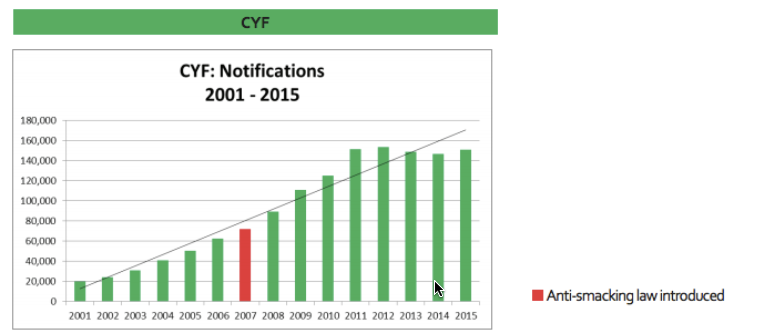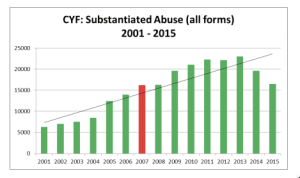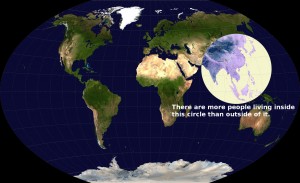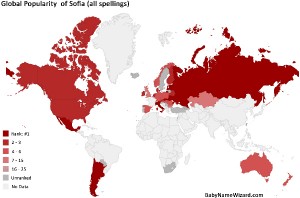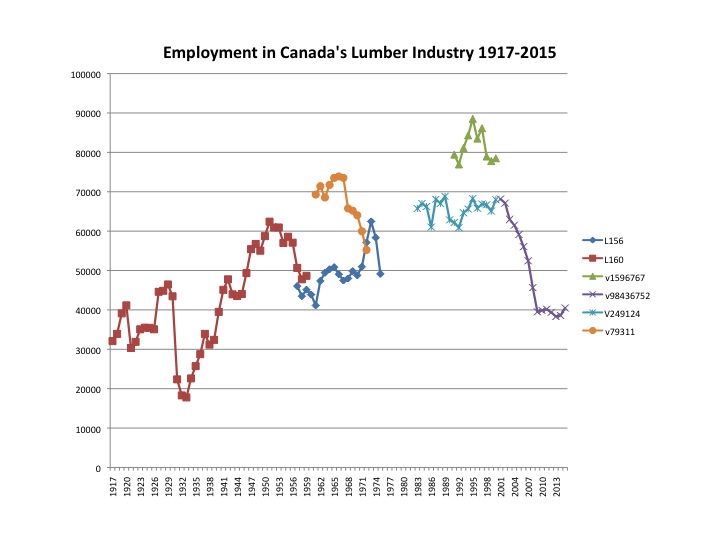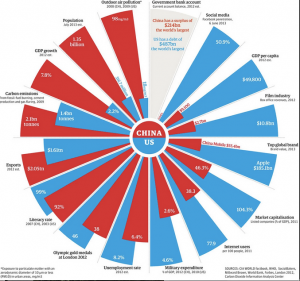Anti-smacking law
Family First has published an analysis that they say shows the anti-smacking law has been ineffective and harmful. I think the arguments that it has worsened child abuse are completely unconvincing, but as far as I can tell there isn’t any good evidence that is has helped. Part of the problem is that the main data we have are reports of (suspected) abuse, and changes in the proportion of cases reported are likely to be larger than changes in the underlying problem.
We can look at two graphs from the full report. The first is notifications to Child, Youth and Family
The second is ‘substantiated abuse’ based on these notifications
For the first graph, the report says “There is no evidence that this can be attributed simply to increased reporting or public awareness.” For the second, it says “Is this welcome decrease because of an improving trend, or has CYF reached ‘saturation point’ i.e. they simply can’t cope with the increased level of notifications and the amount of work these notifications entail?”
Notifications have increased almost eight-fold since 2001. I find it hard to believe that this is completely real: that child abuse was rare before the turn of the century and became common in such a straight-line trend. Surely such a rapid breakdown in society would be affected to some extent by the unemployment of the Global Financial Crisis? Surely it would leak across into better-measured types of violent crime? Is it no longer true that a lot of abusing parents were abused themselves?
Unfortunately, it works both ways. The report is quite right to say that we can’t trust the decrease in notifications; without supporting evidence it’s not possible to disentangle real changes in child abuse from changes in reporting.
Child homicide rates are also mentioned in the report. These have remained constant, apart from the sort of year to year variation you’d expect from numbers so small. To some extent that argues against a huge societal increase in child abuse, but it also shows the law hasn’t had an impact on the most severe cases.
Family First should be commended on the inclusion of long-range trend data in the report. Graphs like the ones I’ve copied here are the right way to present these data honestly, to allow discussion. It’s a pity that the infographics on the report site don’t follow the same pattern, but infographics tend to be like that.
The law could easily have had quite a worthwhile effect on the number and severity of cases child abuse, or not. Conceivably, it could even have made things worse. We can’t tell from this sort of data.
Even if the law hasn’t “worked” in that sense, some of the supporters would see no reason to change their minds — in a form of argument that should be familiar to Family First, they would say that some things are just wrong and the law should say so. On the other hand, people who supported the law because they expected a big reduction in child abuse might want to think about how we could find out whether this reduction has occurred, and what to do if it hasn’t.
